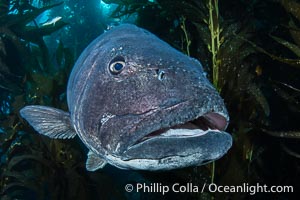
Closeup Portrait of the Face of a Giant Black Sea Bass, showing parasitic sea lice. These parasites find their nutrition from the skin and blood of the host giant sea bass. Smaller fishes such as senoritas and wrasses will commonly clean the sea lice off the giant sea bass.
Species: Giant black sea bass, Stereolepis gigas
Location: Catalina Island, California
Image ID: 39436
Species: Giant black sea bass, Stereolepis gigas
Location: Catalina Island, California
Image ID: 39436
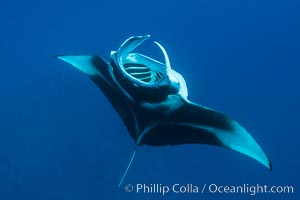
Manta Ray Feeding on Plankton, Fiji.
Species: Giant manta ray, Manta birostris
Location: Gau Island, Lomaiviti Archipelago, Fiji
Image ID: 31323
Species: Giant manta ray, Manta birostris
Location: Gau Island, Lomaiviti Archipelago, Fiji
Image ID: 31323
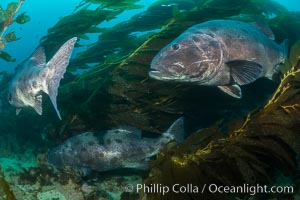
Three giant black sea bass, gathering in a mating/courtship aggregation amid kelp forest at Catalina Island. In summer months, black seabass gather in kelp forests in California to form mating aggregations. Courtship behaviors include circling of pairs of giant sea bass, production of booming sounds by presumed males, and nudging of females by males in what is though to be an effort to encourage spawning.
Species: Giant black sea bass, Stereolepis gigas
Location: Catalina Island, California
Image ID: 33355
Species: Giant black sea bass, Stereolepis gigas
Location: Catalina Island, California
Image ID: 33355
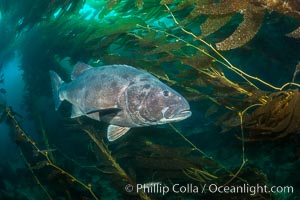
Giant Black Sea Bass with Unique Pattern of Black Spots at Catalina Island. The giant sea bass is an endangered species reaching up to 8' in length and 500 lbs, amid giant kelp forest.
Species: Giant black sea bass, Stereolepis gigas
Location: Catalina Island, California
Image ID: 33356
Species: Giant black sea bass, Stereolepis gigas
Location: Catalina Island, California
Image ID: 33356
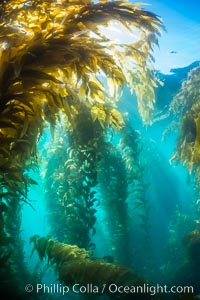
Sunlight streams through giant kelp forest. Giant kelp, the fastest growing plant on Earth, reaches from the rocky reef to the ocean's surface like a submarine forest.
Species: Giant kelp, Macrocystis pyrifera
Location: Catalina Island, California
Image ID: 33434
Species: Giant kelp, Macrocystis pyrifera
Location: Catalina Island, California
Image ID: 33434
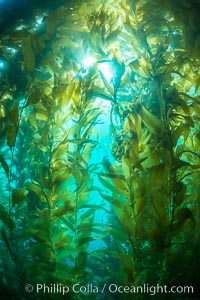
Sunlight streams through giant kelp forest. Giant kelp, the fastest growing plant on Earth, reaches from the rocky reef to the ocean's surface like a submarine forest.
Species: Giant kelp, Macrocystis pyrifera
Location: Catalina Island, California
Image ID: 33435
Species: Giant kelp, Macrocystis pyrifera
Location: Catalina Island, California
Image ID: 33435
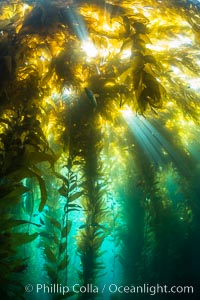
Sunlight streams through giant kelp forest. Giant kelp, the fastest growing plant on Earth, reaches from the rocky reef to the ocean's surface like a submarine forest.
Species: Giant kelp, Macrocystis pyrifera
Location: Catalina Island, California
Image ID: 33436
Species: Giant kelp, Macrocystis pyrifera
Location: Catalina Island, California
Image ID: 33436
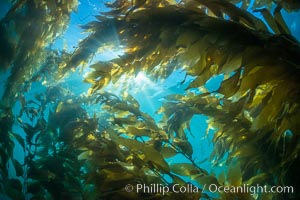
Sunlight streams through giant kelp forest. Giant kelp, the fastest growing plant on Earth, reaches from the rocky reef to the ocean's surface like a submarine forest.
Species: Giant kelp, Macrocystis pyrifera
Location: Catalina Island, California
Image ID: 33437
Species: Giant kelp, Macrocystis pyrifera
Location: Catalina Island, California
Image ID: 33437
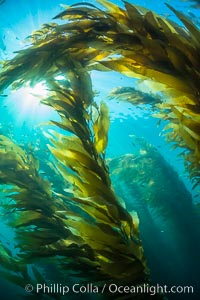
Sunlight streams through giant kelp forest. Giant kelp, the fastest growing plant on Earth, reaches from the rocky reef to the ocean's surface like a submarine forest.
Species: Giant kelp, Macrocystis pyrifera
Location: Catalina Island, California
Image ID: 33438
Species: Giant kelp, Macrocystis pyrifera
Location: Catalina Island, California
Image ID: 33438
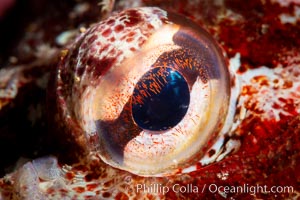
Red Irish Lord eye detail, Browning Pass, British Columbia.
Species: Red irish lord, Hemilepidotus hemilepidotus
Location: British Columbia, Canada
Image ID: 35269
Species: Red irish lord, Hemilepidotus hemilepidotus
Location: British Columbia, Canada
Image ID: 35269
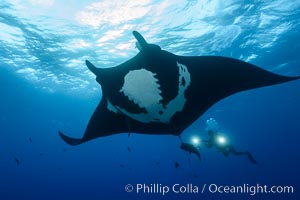
Giant Manta Ray at Socorro Island, Revillagigedos, Mexico.
Species: Giant manta ray, Manta birostris
Location: Socorro Island (Islas Revillagigedos), Baja California, Mexico
Image ID: 33291
Species: Giant manta ray, Manta birostris
Location: Socorro Island (Islas Revillagigedos), Baja California, Mexico
Image ID: 33291
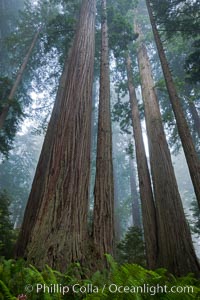
Giant redwood, Lady Bird Johnson Grove, Redwood National Park. The coastal redwood, or simply 'redwood', is the tallest tree on Earth, reaching a height of 379' and living 3500 years or more. It is native to coastal California and the southwestern corner of Oregon within the United States, but most concentrated in Redwood National and State Parks in Northern California, found close to the coast where moisture and soil conditions can support its unique size and growth requirements.
Species: California redwood, Coast redwood, Giant redwood, Sequoia sempervirens
Location: Redwood National Park, California
Image ID: 25795
Species: California redwood, Coast redwood, Giant redwood, Sequoia sempervirens
Location: Redwood National Park, California
Image ID: 25795
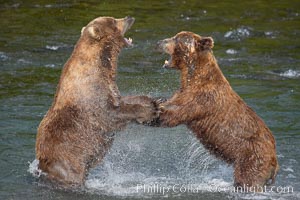
Two mature brown bears fight to establish hierarchy and fishing rights.
Species: Brown bear, Ursus arctos
Location: Brooks River, Katmai National Park, Alaska
Image ID: 17036
Species: Brown bear, Ursus arctos
Location: Brooks River, Katmai National Park, Alaska
Image ID: 17036
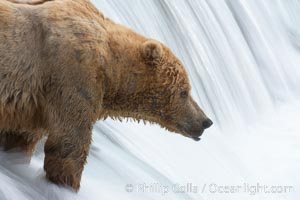
Brown bear waits for salmon at Brooks Falls. Blurring of the water is caused by a long shutter speed. Brooks River.
Species: Brown bear, Ursus arctos
Location: Brooks River, Katmai National Park, Alaska
Image ID: 17047
Species: Brown bear, Ursus arctos
Location: Brooks River, Katmai National Park, Alaska
Image ID: 17047
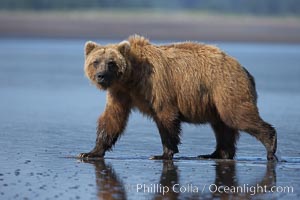
Brown bear walks on tide flats. Grizzly bear.
Species: Brown bear, Ursus arctos
Location: Lake Clark National Park, Alaska
Image ID: 19136
Species: Brown bear, Ursus arctos
Location: Lake Clark National Park, Alaska
Image ID: 19136
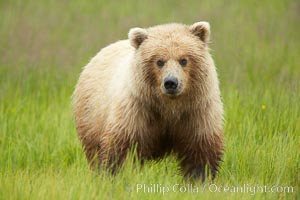
Juvenile female coastal brown bear (grizzly bear) grazes on sedge grass.
Species: Brown bear, Ursus arctos
Location: Lake Clark National Park, Alaska
Image ID: 19137
Species: Brown bear, Ursus arctos
Location: Lake Clark National Park, Alaska
Image ID: 19137
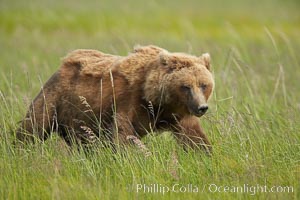
Coastal brown bear in meadow. The tall sedge grasses in this coastal meadow are a food source for brown bears, who may eat 30 lbs of it each day during summer while waiting for their preferred food, salmon, to arrive in the nearby rivers.
Species: Brown bear, Ursus arctos
Location: Lake Clark National Park, Alaska
Image ID: 19138
Species: Brown bear, Ursus arctos
Location: Lake Clark National Park, Alaska
Image ID: 19138
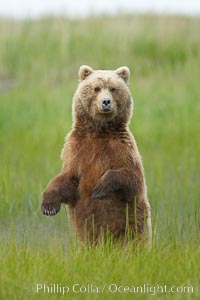
A brown bear mother (sow) stands in tall sedge grass to look for other approaching bears that may be a threat to her cubs.
Species: Brown bear, Ursus arctos
Location: Lake Clark National Park, Alaska
Image ID: 19139
Species: Brown bear, Ursus arctos
Location: Lake Clark National Park, Alaska
Image ID: 19139
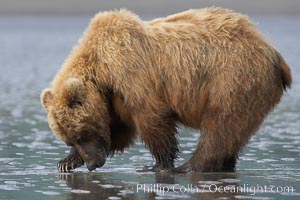
Coastal brown bear forages for razor clams in sand flats at extreme low tide. Grizzly bear.
Species: Brown bear, Ursus arctos
Location: Lake Clark National Park, Alaska
Image ID: 19140
Species: Brown bear, Ursus arctos
Location: Lake Clark National Park, Alaska
Image ID: 19140
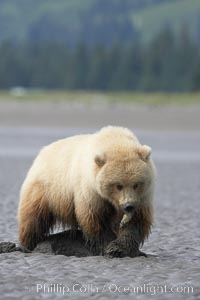
Juvenile female brown bear forages for razor clams in sand flats at extreme low tide. Grizzly bear.
Species: Brown bear, Ursus arctos
Location: Lake Clark National Park, Alaska
Image ID: 19141
Species: Brown bear, Ursus arctos
Location: Lake Clark National Park, Alaska
Image ID: 19141
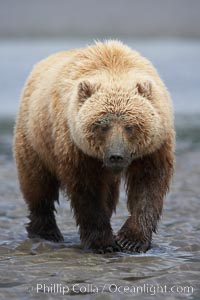
Coastal brown bear on sand flats at low tide.
Species: Brown bear, Ursus arctos
Location: Lake Clark National Park, Alaska
Image ID: 19142
Species: Brown bear, Ursus arctos
Location: Lake Clark National Park, Alaska
Image ID: 19142
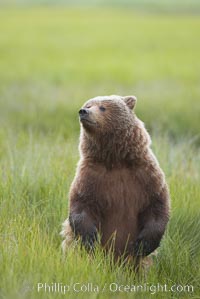
Young brown bear stands in tall sedge grass to get a better view of other approaching bears.
Species: Brown bear, Ursus arctos
Location: Lake Clark National Park, Alaska
Image ID: 19143
Species: Brown bear, Ursus arctos
Location: Lake Clark National Park, Alaska
Image ID: 19143
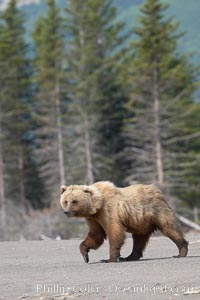
Coastal brown bear walking on sand beach.
Species: Brown bear, Ursus arctos
Location: Lake Clark National Park, Alaska
Image ID: 19144
Species: Brown bear, Ursus arctos
Location: Lake Clark National Park, Alaska
Image ID: 19144
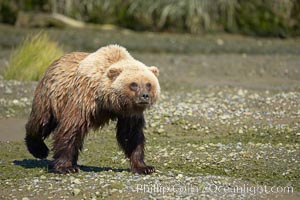
Coastal brown bear walks in Silver Salmon Creek.
Species: Brown bear, Ursus arctos
Location: Silver Salmon Creek, Lake Clark National Park, Alaska
Image ID: 19146
Species: Brown bear, Ursus arctos
Location: Silver Salmon Creek, Lake Clark National Park, Alaska
Image ID: 19146
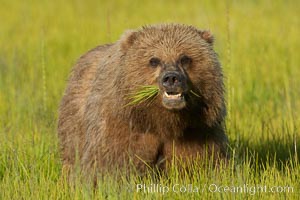
Young brown bear grazes in tall sedge grass. Brown bears can consume 30 lbs of sedge grass daily, waiting weeks until spawning salmon fill the rivers.
Species: Brown bear, Ursus arctos
Location: Lake Clark National Park, Alaska
Image ID: 19147
Species: Brown bear, Ursus arctos
Location: Lake Clark National Park, Alaska
Image ID: 19147
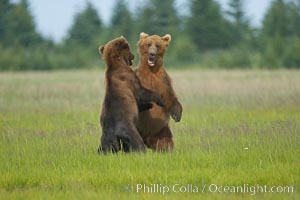
Brown bears fighting or sparring. These are likely young but sexually mature males that are simply mock fighting for practice.
Species: Brown bear, Ursus arctos
Location: Lake Clark National Park, Alaska
Image ID: 19148
Species: Brown bear, Ursus arctos
Location: Lake Clark National Park, Alaska
Image ID: 19148
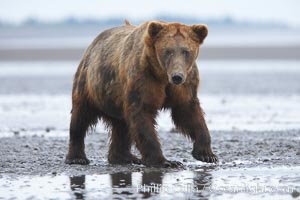
Mature male coastal brown bear boar waits on the tide flats at the mouth of Silver Salmon Creek for salmon to arrive. Grizzly bear.
Species: Brown bear, Ursus arctos
Location: Lake Clark National Park, Alaska
Image ID: 19149
Species: Brown bear, Ursus arctos
Location: Lake Clark National Park, Alaska
Image ID: 19149
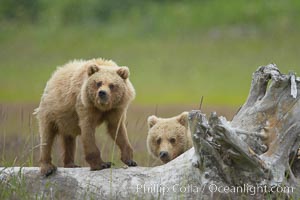
Brown bear cubs. These cubs are one and a half years old and have yet to leave their mother. They will be on their own and have to fend for themselves next summer.
Species: Brown bear, Ursus arctos
Location: Lake Clark National Park, Alaska
Image ID: 19150
Species: Brown bear, Ursus arctos
Location: Lake Clark National Park, Alaska
Image ID: 19150
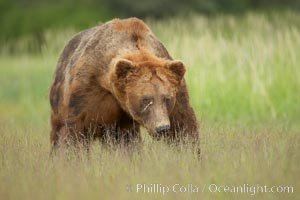
Full grown, mature male coastal brown bear boar (grizzly bear) in sedge grass meadows.
Species: Brown bear, Ursus arctos
Location: Lake Clark National Park, Alaska
Image ID: 19151
Species: Brown bear, Ursus arctos
Location: Lake Clark National Park, Alaska
Image ID: 19151
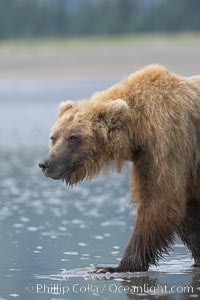
Coastal brown bear forages for razor clams in sand flats at extreme low tide. Grizzly bear.
Species: Brown bear, Ursus arctos
Location: Lake Clark National Park, Alaska
Image ID: 19152
Species: Brown bear, Ursus arctos
Location: Lake Clark National Park, Alaska
Image ID: 19152